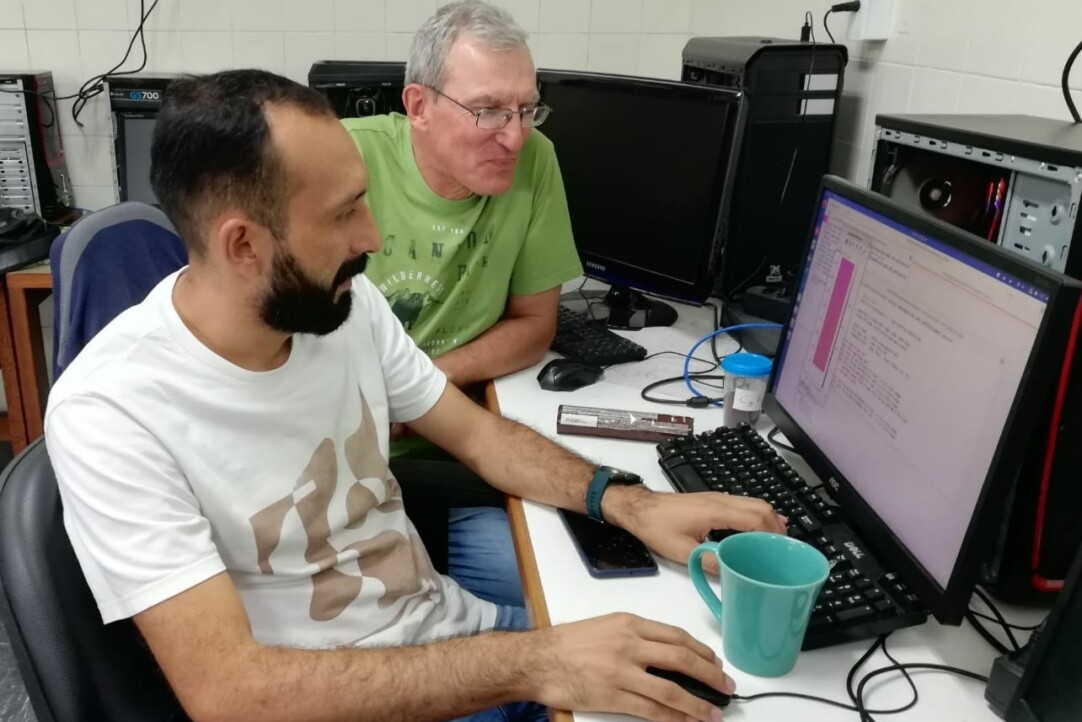Progress in the cooperation between the Centre and Brazilian research institutions.
Joint research is aimed at the theoretical description of a new generation of superconducting materials and devices. Among them is the work on the magnetic response of ferromagnetic superconductors, which offers a fresh look at the phenomenon of intermediate or intertype superconductivity in various materials. Another interesting work concerns the new mechanism of the "origin of complexity from simplicity" - when a system with rather primitive interactions between its constituent parts allows the emergence of complex spatial and temporal configurations (patterns). The article with these results were sent respectively to the editors of the prestigious journals Communications Physics and Physical Review X.

Director of the Center Dr. A. Vagov visited Brazilian colleagues at the Federal University of Pernambuco (Recife) and the Federal University of Rio de Janeiro. The scientific cooperation between the Center and the Brazilian research institutes has been going on for more than 10 years. Joint research is aimed at the theoretical description of a new generation of superconducting materials and devices.
In June 2003 Professor Mauro Doria from the Federal University of Rio de Janeiro visited Moscow. Based on the scientific discussions, seminars and lectures, problems were formulated, which will be the topic of the joint Russian-Brazilian research in the near future. A return visit to Rio de Janeiro was made within the framework of this program.
During the visit, Dr. A. Vagov held seminars at which he presented results of the research conducted in the Center to Brazilian colleagues. In addition, Dr. A. Vagov completed a number of joint works initiated during his previous visits to Brazil - in August 2022 and March 2023.
Among them is the work on the magnetic response of ferromagnetic superconductors, which offers a fresh look at the phenomenon of intermediate or intertype superconductivity in various materials. The results of this work predict that intertype superconductivity is always observed in systems where superconductivity coexists with ferromagnetism. This applies to both ferromagnetic superconductors and hybrid systems, where superconducting and ferromagnetic layers alternate. Intertype superconductivity arises in a certain temperature interval, below the superconducting transition temperature, but above the Curie temperature for magnetization.
An article with these results was sent to the editors of the prestigious journal Communications Physics.
Another interesting work concerns the new mechanism of the "origin of complexity from simplicity" - when a system with rather primitive interactions between its constituent parts allows the emergence of complex spatial and temporal configurations (patterns). Until now, it was believed that such a phenomenon, quite often encountered in a wide variety of natural systems, is based on a competition between several types of interactions with different characteristic lengths (Turing model).
Calculations carried out by Drs. A. Vagov and A.A. Shanenko in collaboration with scientists from the University of Pernambuco showed that there is another mechanism for the emergence of complex patterns, based on the infinite degeneration of the mixed state of a superconductor. Such degeneracy makes the state of the system with any spatial configuration equally possible, no matter how exotic it may be. In real materials, this degeneracy is removed with the help of external influences (temperature, field, current, size and shape of the sample, the presence of other materials nearby, and so on).
This result changes the prevailing paradigm about the mechanisms of spontaneous creation of complex spatial structures in nature. It is applicable to a whole class of so-called self-dual physical models, where several interacting fields have the same characteristic length.
An article with the results of this study was sent to the editors of the prestigious journal Physical Review X.
Figure. Different types of spatial distribution of the density of superconducting condensate near the degeneracy point of a bulk superconducting sample.
